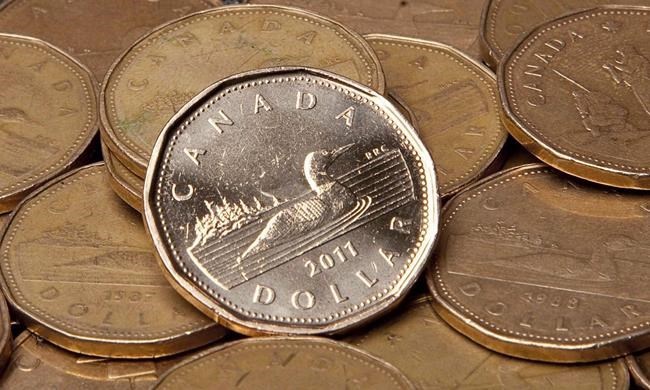TORONTO — The consumer discretionary sector responded positively to retail sales numbers and prompted Canada's main stock index to inch higher to conclude a relatively flat week.
Several large Canadian retailers saw their share prices climb Friday despite sales falling for a second consecutive month in January with indications pointing to a rebound in February as restrictions are eased.
Aritzia Inc. shares increased 3.5 per cent and Canadian Tire was up 3.1 per cent as the consumer discretionary sector gained 1.4 per cent.
"Even though it's down in January, we've already seen a progression," said Kevin Headland, senior investment strategist at Manulife Investment Management, referring to monthly retail sales numbers from Statistics Canada.
He said there's an expectation for improvements going forward and that January's numbers were not an indication of a weaker environment.
The S&P/TSX composite index closed up 17.53 points to 18,854.00 for a gain of less than three points on the week despite surpassing 19,000 for the first time.
In New York, the Dow Jones industrial average was down 234.33 points at 32,627.97. The S&P 500 index was down 2.36 points at 3,913.10, while the Nasdaq composite was up 99.07 points at 13,215.24.
Energy was the big winner, tracking gains in crude oil prices to rise 2.2 per cent as Crescent Point Energy Corp. increased 5.6 per cent.
The May crude oil contract was up US$1.38 or 2.3 per cent to US$61.44 per barrel and the April natural gas contract was up 5.4 cents at nearly US$2.54 per mmBTU.
Crude oil prices partly rebounded from being down as much as 8.4 per cent on the week after rising above US$65 a barrel.
"I don't think (there's) any reason why we should see sub-$60 especially in the context of this broader global reopening expectation," Headland said in an interview.
"Supply-demand fundamentals should be supportive of slightly higher prices from here and I think it felt earlier this week that it was an opportunity for investors to get back in."
The Canadian dollar traded for 79.96 cents US compared with 80.27 cents US on Thursday.
Health care gained 1.8 per cent and technology rose with shares of BlackBerry Ltd. increasing 2.1 per cent.
Telecommunications was one of four losing sectors on the day. It fell 0.9 per cent as shares of Shaw Communications Inc. and Rogers Communications Inc. closed down 2.1 per cent and 1.1 per cent, respectively, to end the week in which Rogers announced a $26-billion deal to acquire Shaw.
A drop by Canada's railways pushed industrials lower while materials dipped despite higher gold prices.
The April gold contract was up US$9.20 at US$1,741.70 an ounce and the May copper contract was up half a cent at US$4.11 a pound.
The heavyweight financials sector lost some ground even though 10-year U.S. treasury yields increased slightly to 1.74 per cent.
The banking sector, particularly in the U.S., was hit by the Federal Reserve's decision not to extend a relaxation of supplementary leverage ratios during the pandemic that is due to expire March 31.
The rule designed to encourage banks to lend during the crisis allows them to hold less capital against treasuries and other holdings.
Many people were hoping the Federal Reserve would extend the relief but given its positive outlook for the economy, there was no reason to continue the exemption, said Headland.
"I think maybe it's a short-term hit to the banking sector, but banks are going to benefit from an expansionary economic environment as well as a much steeper yield curve, so the banks should recover fine."
The trading week was marked by a rise of U.S. 10-year bond yields to their highest level since January 2020.
The yield curve moved steeper a lot faster than observers foresaw, hitting levels that were expected to be reached in the third quarter, said Headland.
"It's not necessarily a bad thing, especially when you look at the underlying fundamental data that is supportive of a reopening, a better economic environment and continued upward trend in equity markets right through the rest of the year."
This report by The Canadian Press was first published March 19, 2021.
Companies in this story: (TSX:CBG, TSX:SJR.B, TSX:RCI.B, TSX:BB, TSX:CPG, TSX:ATZ, TSX:CTC.A, TSX:GSPTSE, TSX:CADUSD=X)
Ross Marowits, The Canadian Press




